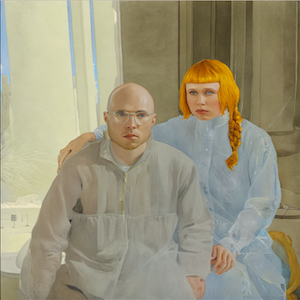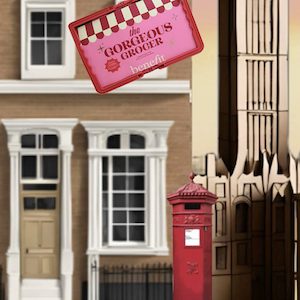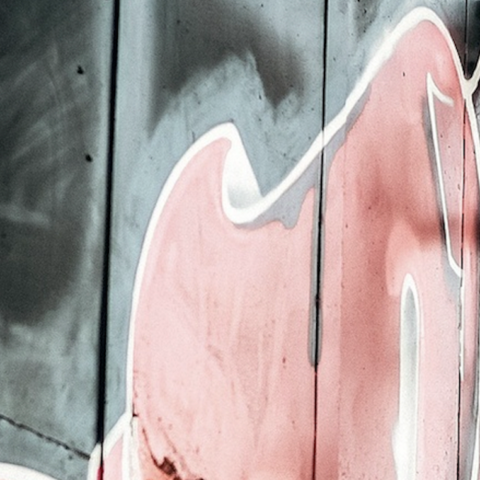A Great Time to Love Art
By Zonaira Chaudry
What a wonderful time it is to be an art lover! To experience art in all forms and technologies and continue to be bewildered by novel artistic innovations. Art, a construct of reality and fantasy, has always been alive in human imagination from the beginning of civilization when cavemen drew paintings to construct a story. Even though the power of the paintbrush has always been prevalent in art with changing civilizations, art has taken up multitudes of forms, identities, spaces, and textures, reconstructing the genre of contemporary art telling tales, evoking emotions or making powerful statements.
To celebrate these art-constructing moments, Tate is hosting “Electric Dreams: Art and Technology Before the Internet” which promises to transport the viewers to a time when op-art was being constructed, a time when artists were visualizing unique ways to mingle sense and play with perception. By discovering the magic of digital art, artists worked on sensory installations and automatically generated works. This deconstruction of art happened between the 50s and 90s where machines and algorithms were fused to create mind-blowing art thereby pushing the artistic paradigm into its eclectically electric era, all this became art even before the internet was a reality.
“Electric Dreams: Art and Technology Before the Internet” aims to commemorate the international artists who constructed the narrative of scientific and digital art incorporating science, principles of mathematics, and a variety of industrial processes. The exhibition creates a psychedelic environment that was envisioned during the decades of the 50s to the 90s. This one-of-a-kind exhibition reflects on works of a new wave of radical artists who were the first ones to give voice to digital technology using home computers and machine-made art. The exhibition, which starts on 28th November and runs till 1st June, 2025, is free for members.

Monika Fleischmann & Wolfgang Strauss Liquid Views – Narcissus Mirror 1992
From machine-made art to AI art! A concept that was never heard of or imagined before. From being synonymous with “Killing Art” to being embraced as “Collaborative Art,” more and more artists are working with AI ethically by constructing new artistic dimensions.
‘Constant Washing Machine’ is the latest artwork by Blast Theory where everyday Hygiene is linked with the use of “Responsible AI”. Blast Theory compares the habit of using soap with washing hands to employing ethical practices in AI on a daily basis.

Constant Washing Machine – Blast Theory
The artwork has eight soap bars that have various phrases and words related to use of AI etched in them. This out-of-the-box idea of associating cleanliness with artificial intelligence was commissioned by Data as Culture, a wing of the University of Sheffield’s Framing Responsible AI Implementation & Management (FRAIM) project. Blast Theory are artists in residence with FRAIM. ‘Constant Washing Machine’ will also have a series of photographs that will feature the researchers with their selected keywords.
When it comes to AI being a part of routine life, Blast Theory Studio suggests the idea to “do” rather than“ think”. The concept behind the art project was to investigate more about the nature of language, the terms used in AI policies, and the part that organizational culture plays in generating ‘Responisble AI’.
‘Constant Washing Machine’ gives the opportunity to reflect on data, ideas, users of AI and their perspectives. Using human habits in association with responsible AI development makes it a constant reminder for its users to be ethical.
A simple thing of daily use, like a bar of soap, which we share with others can show a strong meaning of righteousness. ‘Constant Washing Machine’ will help the general public to understand what is the meaning behind ‘Responsible AI’ along with emphasizing its mindful use.
The folks at Blast Theory are hosting an event where participants can wash their hands with ‘Constant Washing Machine’ soaps. More installations and performances will be announced later on. Viewers can also tune into the online event on 10th December. For more information, visit culture.theodi.org/on-now/.
Installations give viewers an immersive experience and construct a personal connection. One such experience is being offered at The Estonian National Museum (ENM) at the cultural capital of Tartu this year. The Japanese artistRyoji Ikedais presenting his solo audiovisual exhibition by experimenting with art, science, and music. The exhibition is dedicated to Estonians and promises to take the viewer on a unique journey of visuals and sounds. The exhibition is open till 2nd March, 2025.

Critical Paths by Ryoji Ikeda- Image by Maanus Kullamaa
Developed with the support of the University of Tartu’s Institute of Genomics and the Estonian Philharmonic Chamber Choir, this project attempts to study the connection between soundscapes by using 100,000 DNA samples from Estonians while exploring the intertwined nature of Estonian culture and science.
Ikeda is widely known for his extensive installations, also constructed on scientific data. During 2019 to 2020, Ikeda presented data-verse in Paris (Centre Pompidou) and New York (Shed Gallery), gaining international recognition. His forte has always been combining art with science, producing visually appealing pieces.

Data-verse by Ryoji Ikeda- Image by Maanus Kullamaa
In his latest creation, viewers can walk through a physical data stream in a multisensory setting reflecting the Estonian history. The play of thought, sight, and sound in this physical space is an experience most will treasure for life. He constructs three main pieces as a part of the installation. His 2024 creation is “Vox Aeterna,” taken from the Latin words “Eternal Voice,” sung by the Philharmonic Chamber Choir. “The Critical Paths” was a construct based on research at the University of Tartu Institute of Genomics. Attendees can enjoy data about the history of humanity on LED screens. The installation shows data in ways ordinarily unimagined with its extensiveness and complexity. It constructs scientific and numerical ideas into creative resources.
Ikeda says that his sole contribution in creating art is only 50% and rest of the 50 % is constructed by the audience. He believes that there is no right or wrong answer when it comes to interpreting his art and leaves the meaning to be derived by the viewer. He feels that every person is capable of feeling a special connection to art.
Machines, algorithms, and the use of artificial intelligence are changing the way art is conceived, constructed, and presented. Art lovers can now be a part of the creative process and absorb themselves in man- or machine-made creativity. Times have changed, and so has the narrative and inspiration behind great works of art.
If you enjoyed reading about art in different forms , be sure to visit art meeting AI.





